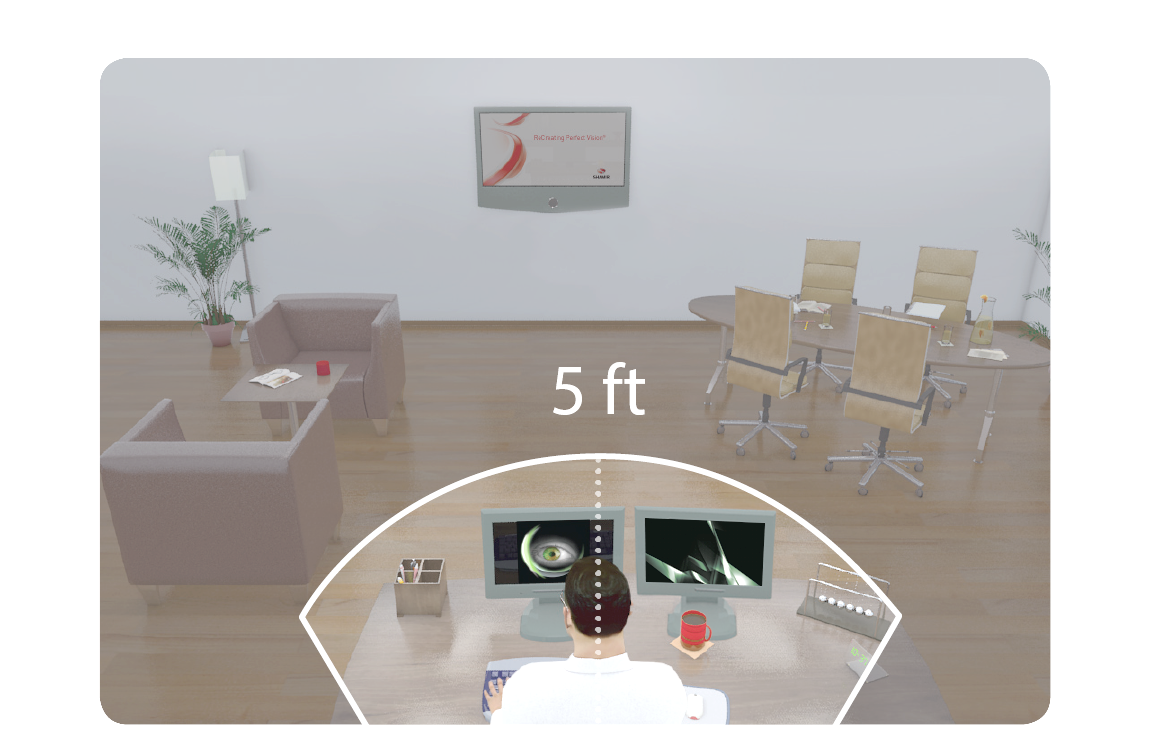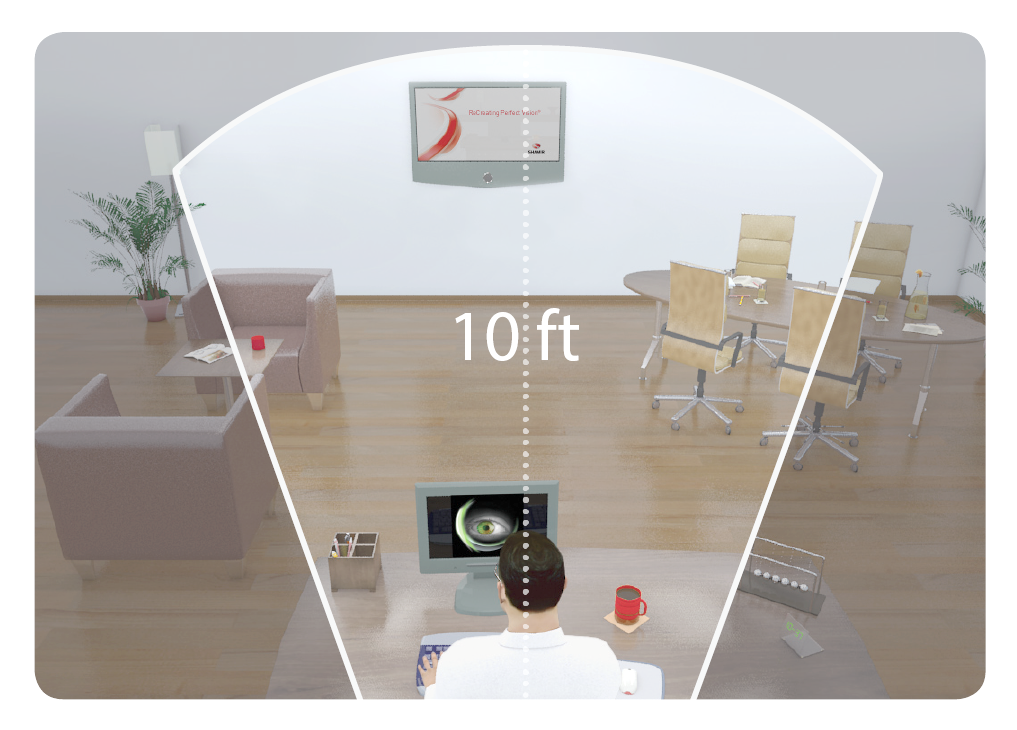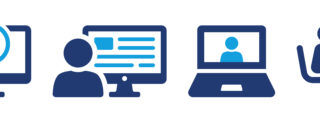
Computer Vision Syndrome and Treatment Options
by Rachael Wruble
Over the past year you probably have had increased screen times on computers and tablets. You may have experienced symptoms like headaches, eye fatigue, eye strain, and redness of the eyes after using the computers throughout the day.
Computer vision syndrome (CVS), also referred to as digital eye strain, results from prolonged computer, tablet, and cell phone use. The average American worker spends 6.5 hours a day working plus additional time on a cell phone or other device at home. In most cases, symptoms of CVS occur because the visual demands of the worktask are greater than the eye’s ability to comfortably perform them. At greatest risk for developing CVS are those who spend two or more continuous hours at a computer or using a digital screen device every day.
Most common symptoms associated with CVS or digital eye strain:
- Eyestrain
- Eye Fatigue
- Double Vision
- Red Eyes
- Watery Eyes
- Headaches
- Blurred vision
- Dry eyes
- Neck and shoulder pain
Visual symptoms experienced by many users will subside after discontinuing use of working on digital devices. However, some individuals will continue to experience the symptoms even after prolonged computer use and it could worsen day after day. It is important to address the symptoms to decrease long term risk of continued damage.
Treatment for Computer Vision Syndrome
- Adjust Glare – Try putting a matte screen filter on the screen to reduce glare. Also close blinds and curtains to minimize glare from windows. Move lights such as lamps so they are away from the screen.
- Adjust brightness and contrast. If your screen glows brighter than your surroundings, your eyes have to work harder to see. Adjust your screen brightness to match the level of light around you. Also, try increasing the contrast on your screen to reduce eye strain.
- Take a step back from your screen, keeping it an arm’s length away. Place the screen slightly below eye level, about 4 to 5 inches and tilt the top of the screen back about 10 to 20 degrees. Make sure you are eye level with the screen and not tilting your neck upward or downward.
- Follow the 20/20/20 Rule – Take a break every 20 minutes by looking at an object 20 feet away for 20 seconds. Looking further away will give your eyes a moment to relax.
- Blink! Humans normally blink about 15 times in one minute. However, studies show that we only blink about 5 to 7 times in a minute while using computers and other digital screen devices. Blinking is the eye’s way of getting the moisture it needs on its surface.
- Limit Bedtime Screens. – There are studies that show that device usage just prior to bed may affect the body’s sleep cycle. Try putting devices down 2 hours prior to bedtime.
- Posture: According to Chiropractor, Dr. Laura Peterson, when you sit you want your ears directly over top of your shoulders so sit up straight and avoid hunching forward. It is important to use a chair that has good back support and where you can position both feet on the floor.
- Lubricant Eye Drops: Keeping your eyes hydrated is key to keep clear comfortable vision. There are numerous over the counter drops and many can be very good for the eyes, but several can cause long term damage. Try using preservative free tear drops and always remember to consult with your eye doctor.
- Blue Filter Glasses: The addition of blue filter glasses while working on a screen may benefit by reducing eye fatigue and improving sleep cycles.
- Prescription Computer Glasses: Some individuals who do not require the use of prescription eyeglasses for other daily activities may benefit from glasses prescribed specifically for computer use. In addition, persons already wearing glasses may find their current prescription does not provide optimal vision for viewing a computer.
There are a few companies that make specific workspace lenses that are customized for your work environment. It is important when you have an examination with your eye doctor to let them know the devices you work on and what distance that they are placed at. Some individuals may have 3 screens lined up on a desk where others may have a tv mounted screen, desktop, and laptop. This may require different prescriptions that can be customized for your everyday work life.
Two options available are the Shamir Computer™ and Shamir WorkSpace™, which can alleviate Computer Vision Syndrome. With Shamir Computer™ and Shamir WorkSpace™, presbyopic computer users no longer need to lift their head to see the computer clearly. Other non-computer progressive lens designs may require bending or tilting their neck to find a sweet spot or you may have to peer over the top of reading glasses. Every wearer of the new advanced Shamir occupational lenses can hold their head and neck in a natural comfortable position while enjoying perfect focus.
| Option 1: Shamir Computer™ | Option 2: Shamir WorkSpace™ |
|---|---|
| For those focused on immediate surroundings: When focusing on a computer and its near surroundings is a top priority, Shamir Computer™, an advanced Freeform® lens, provides a wide field of near viewing with clear vision up to 5ft. – a far greater depth of field than that offered by conventional reading lenses. Shamir Computer™ is ideal for those patients working on a computer throughout the day, especially those working with multiple monitors. It is important to understand that Shamir Computer™ serves other occupations as well, because it provides clear vision for any task performed within 5ft. Below is a list of occupations that may benefit from Shamir Computer™: • Lab Technician • Pianist • Accountant • Data Entry Clerk • Graphic Designer | Sharp focus for dynamic workers Shamir WorkSpace™ is the best solution when priority focus is both mid-distance and near viewing. Offering a greater depth of field, up to 10ft., this advanced and highly sophisticated Freeform® lens design, allows movement within the workspace and sharp vision whether the required focus is on the desk or a colleague across the room. If working on near tasks and interacting with employees or presenting to groups fall within the patients daily tasks, Shamir WorkSpace™ is the ideal solution. It is also the best occupational solution for those who are actively moving around their work place throughout the day, providing clarity for those tasks performed within 10ft. Below is a list of occupations that may benefit from Shamir WorkSpace™: • Florist • Sales Clerk • Nurse • Chef • Receptionist • Optician |
| Depth of Field: Shamir Computer™ | Depth of Field: Shamir WorkSpace™ |
 |  |
It is important to have a comprehensive eye exam with your local eye doctor to determine the best treatment options for you and your work environment. Starting now can reduce further eye strain in the future.
Comments are closed.







